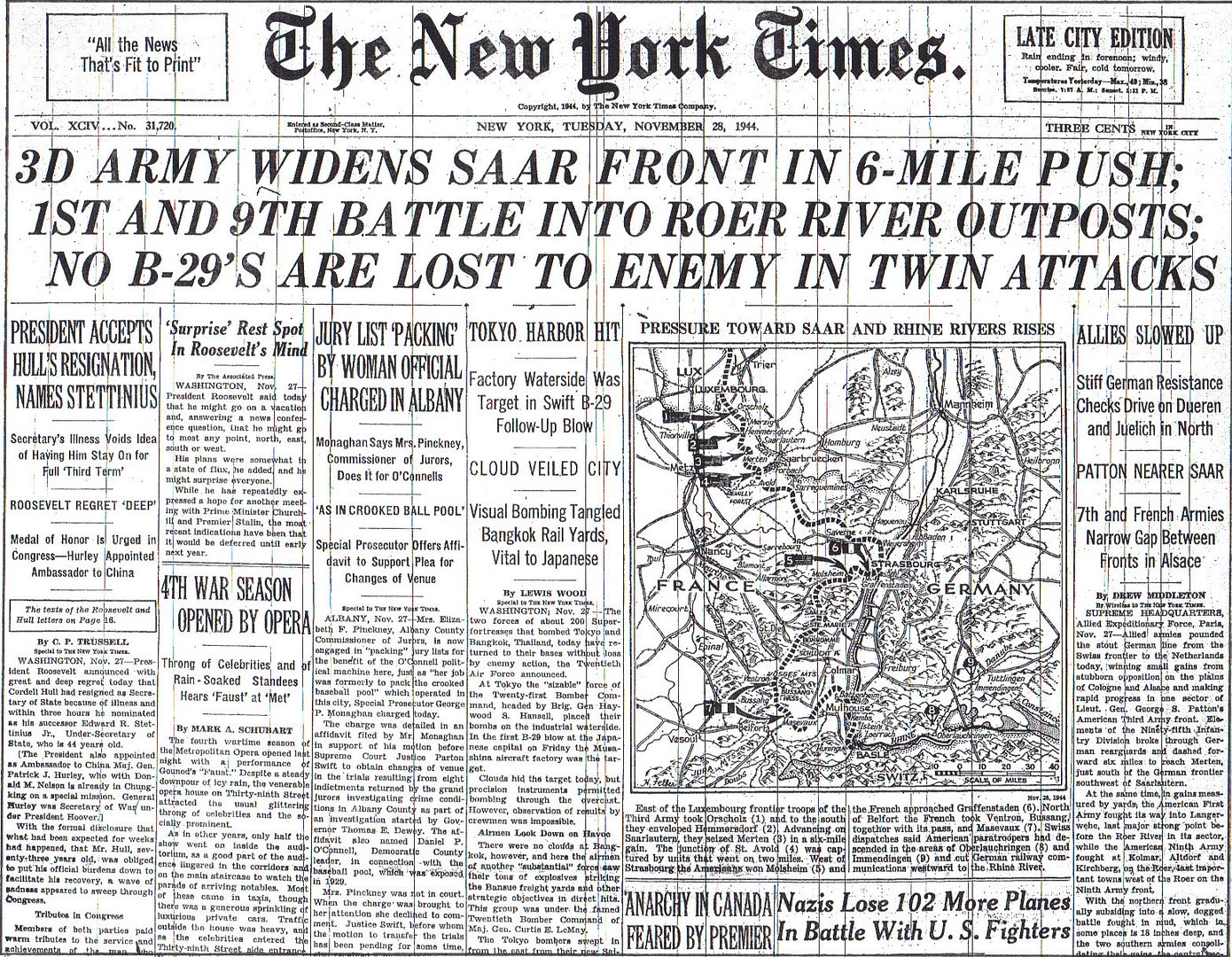
Posted on 11/28/2014 4:20:08 AM PST by Homer_J_Simpson

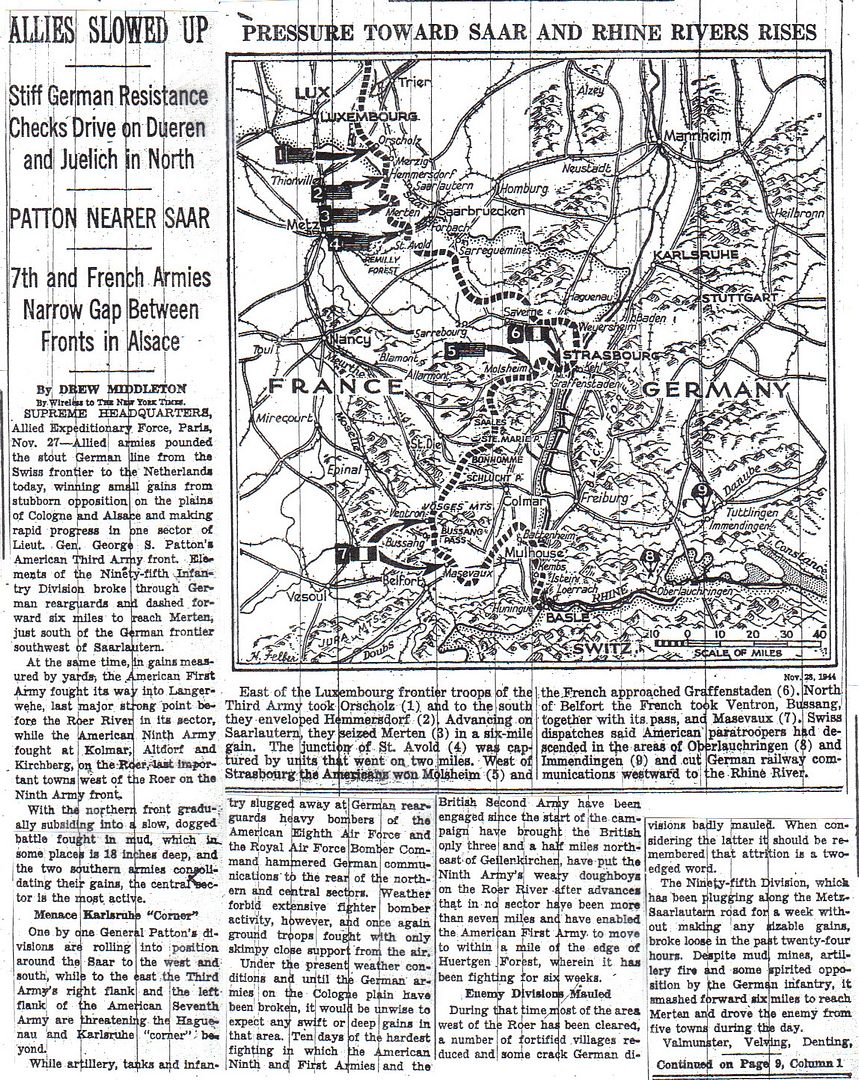
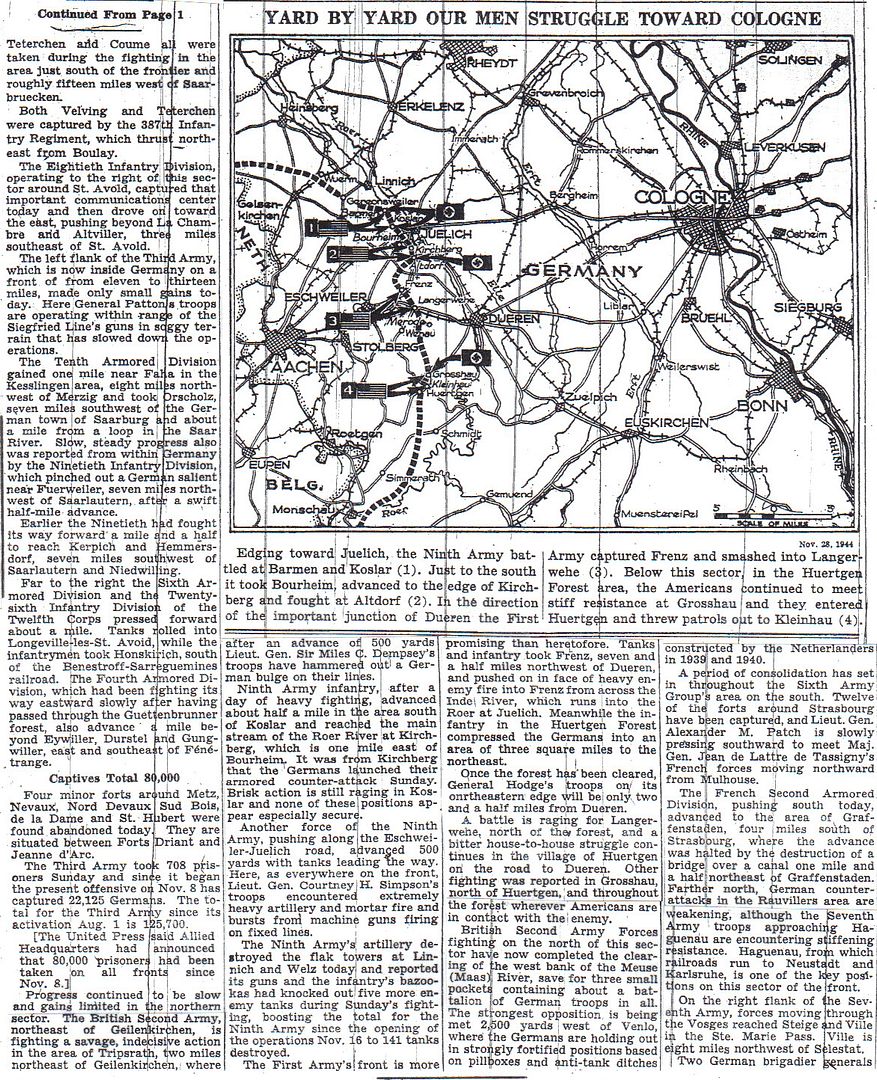
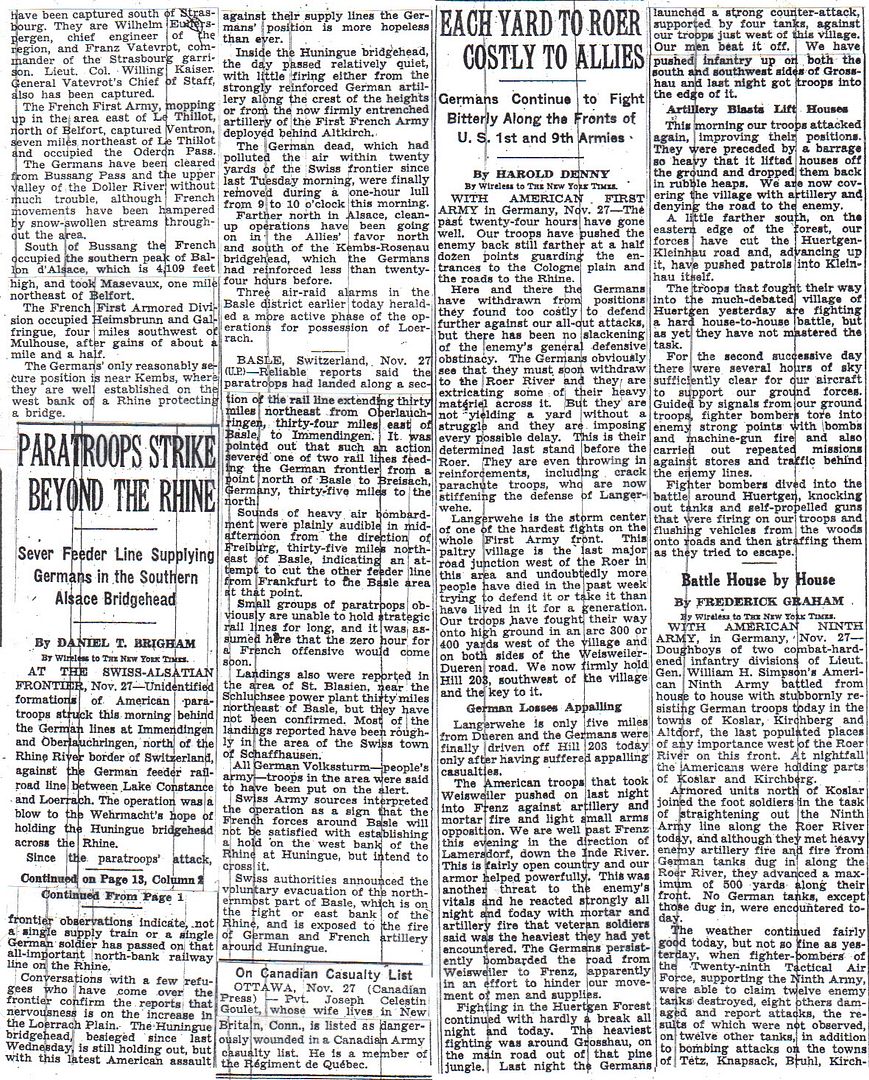
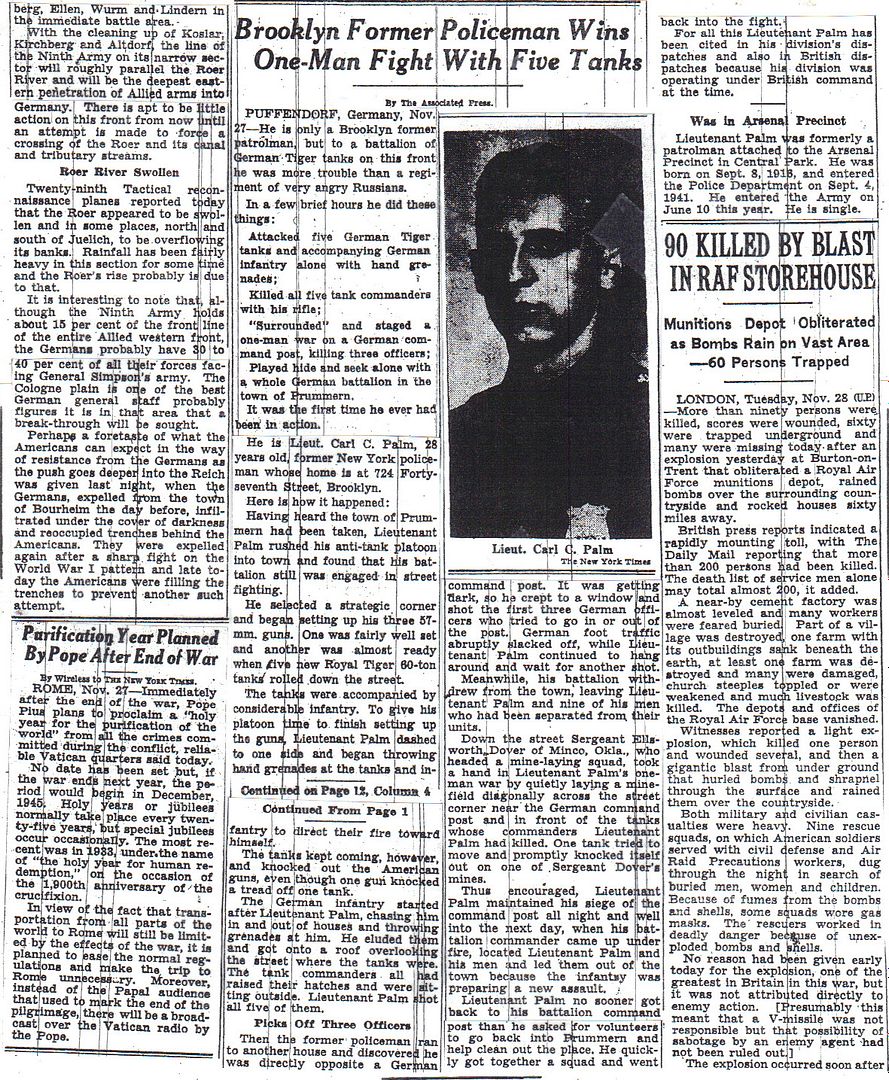
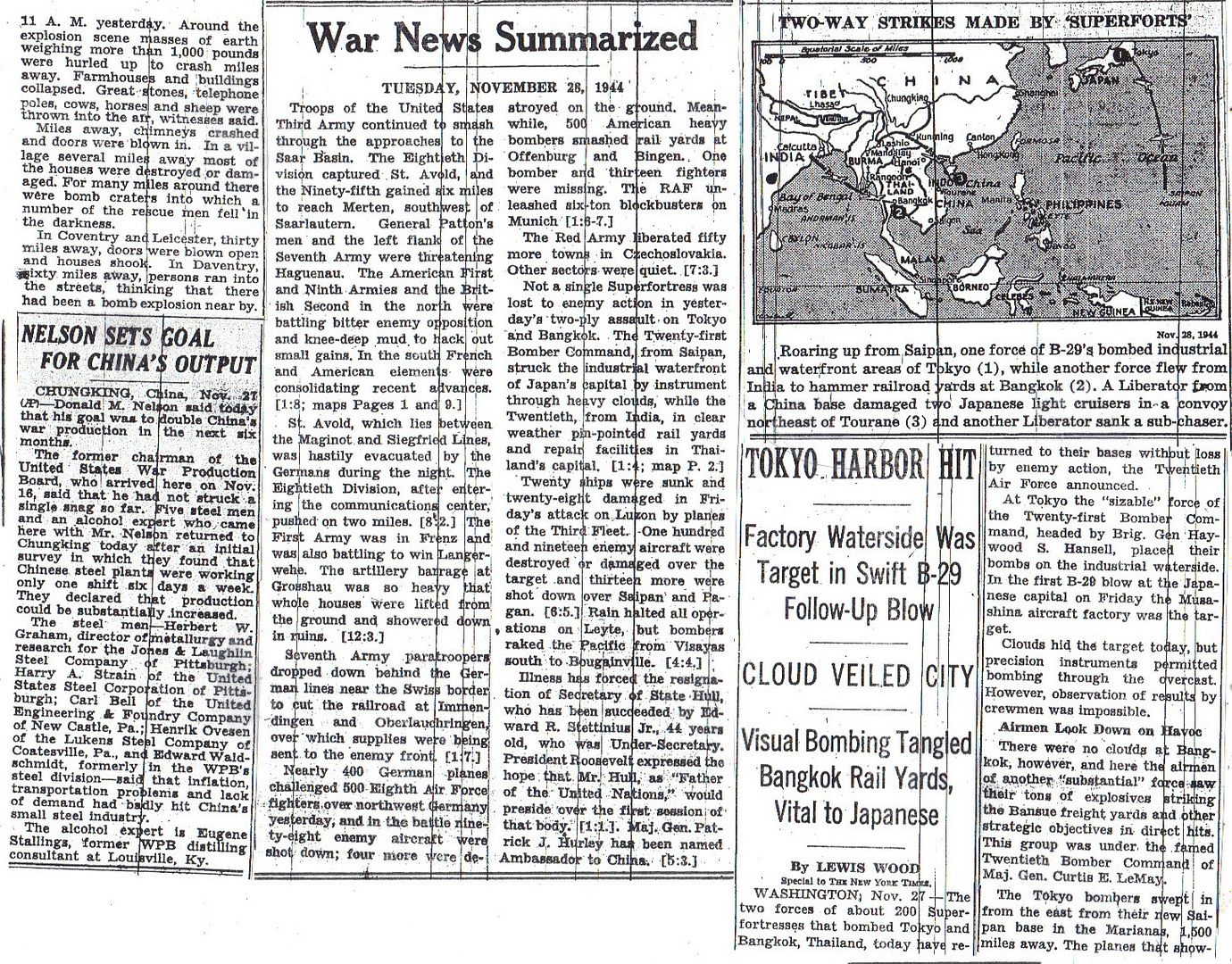
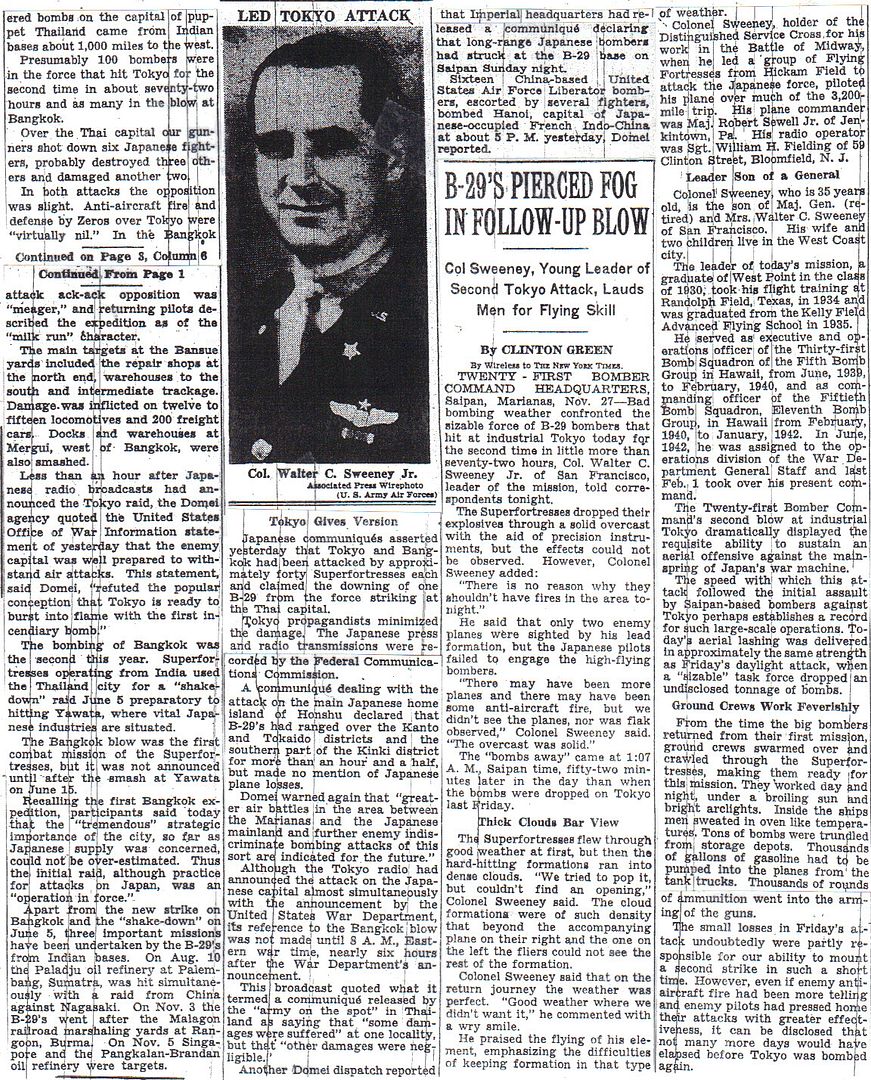
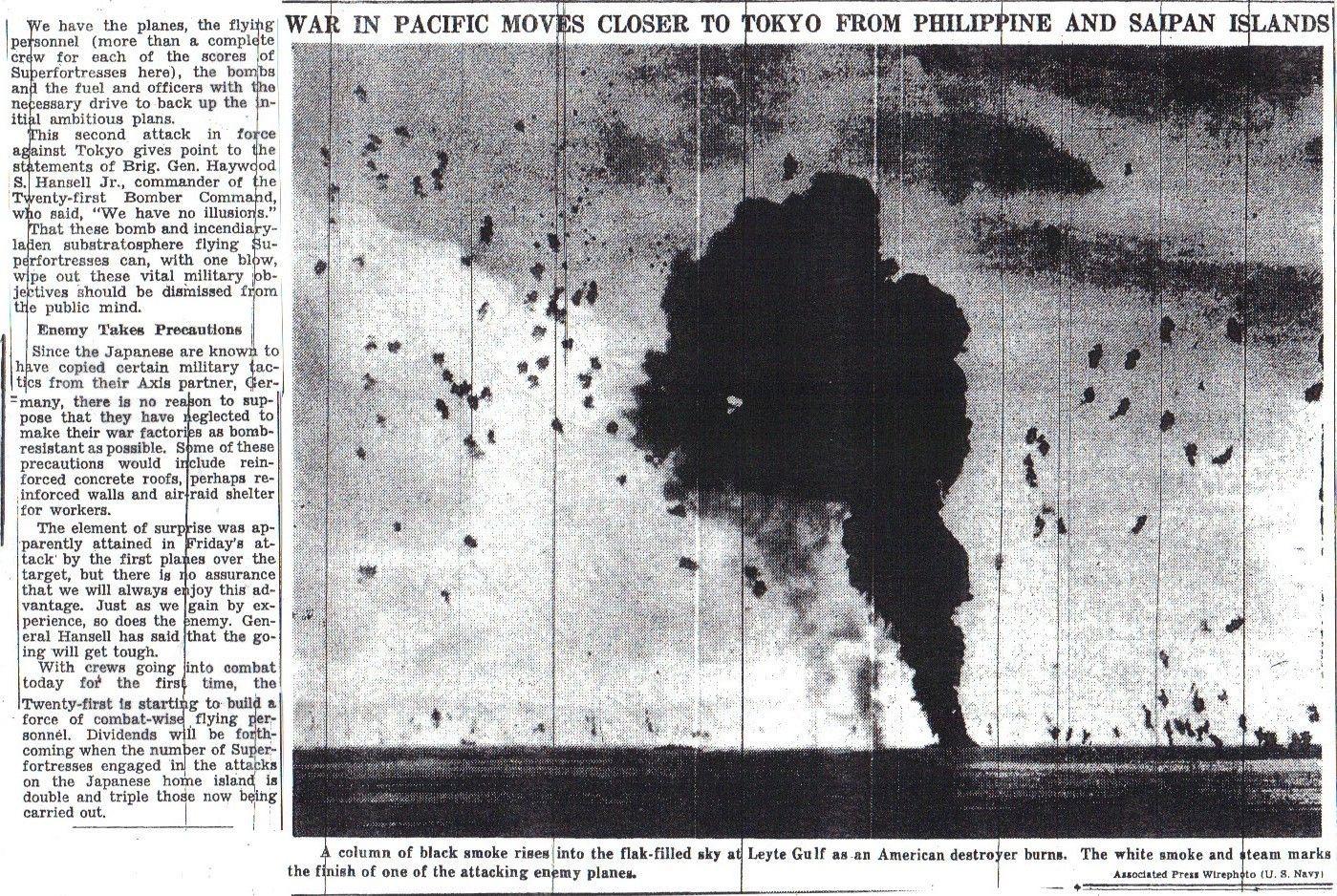
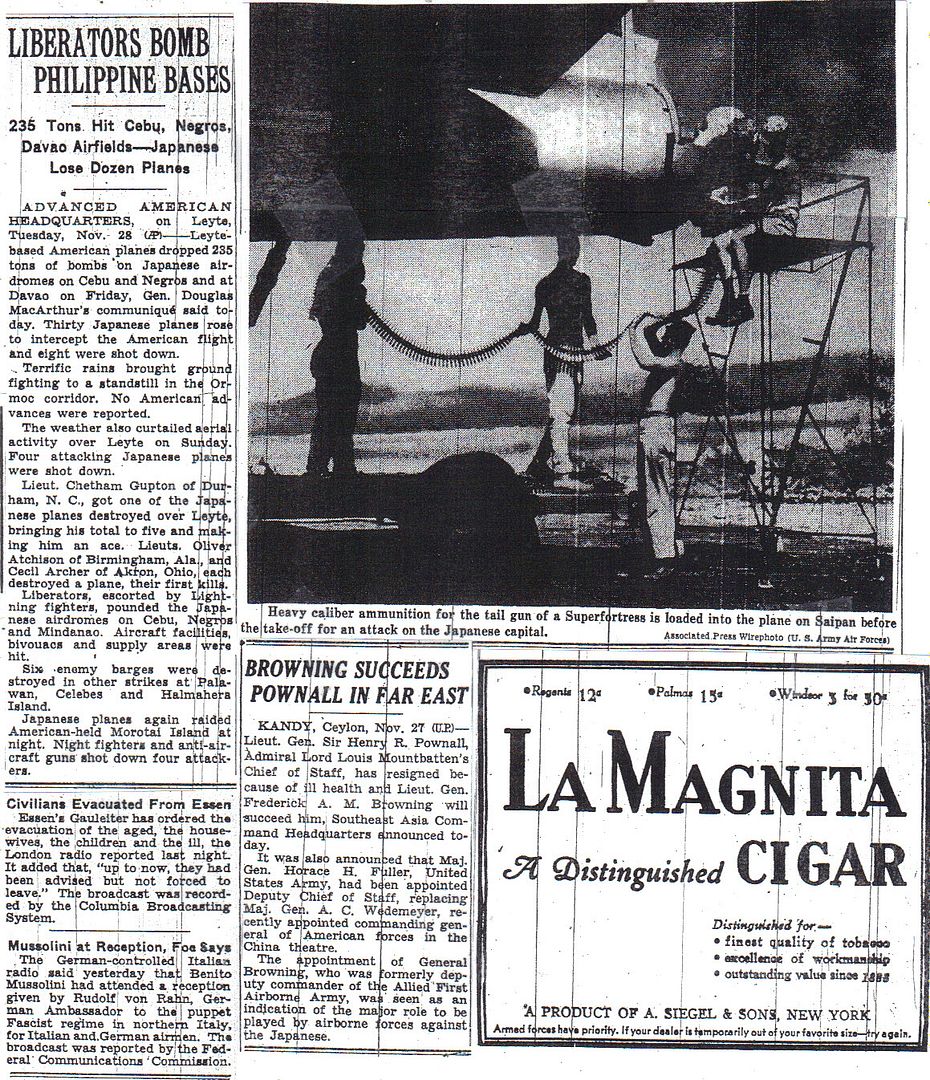

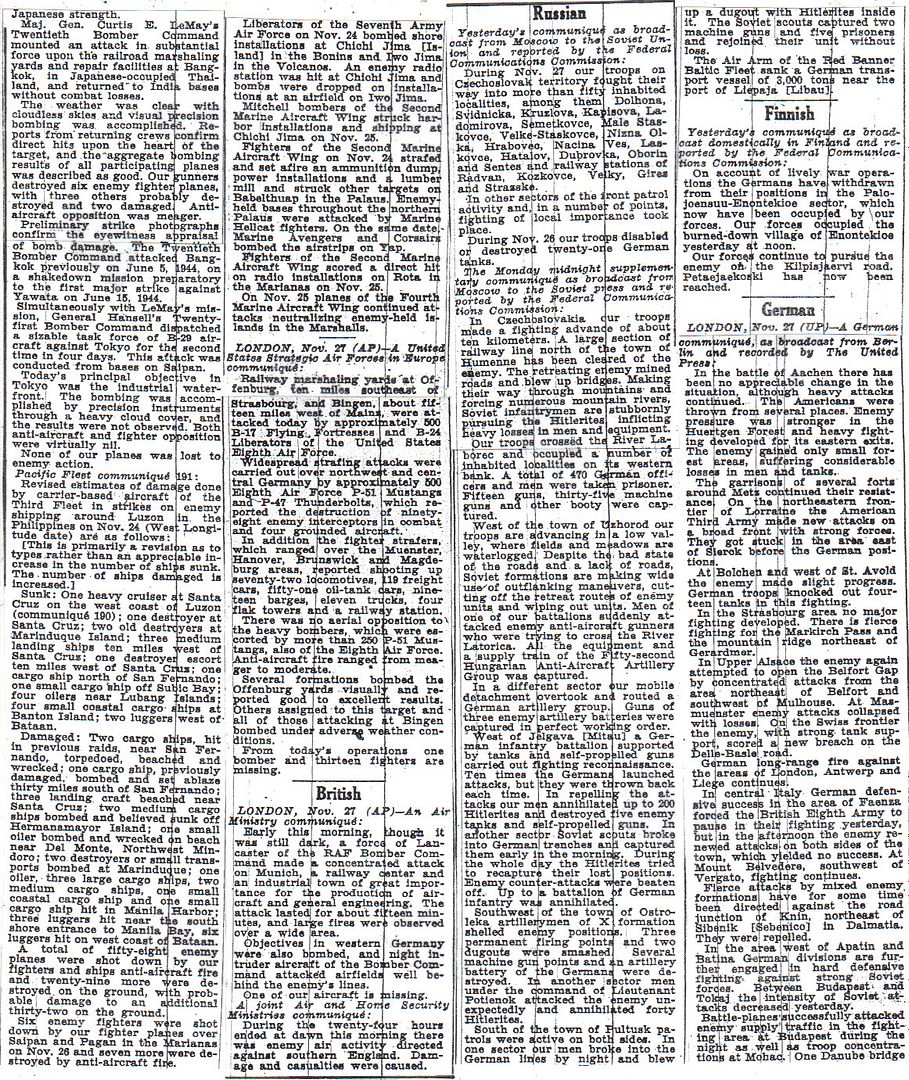
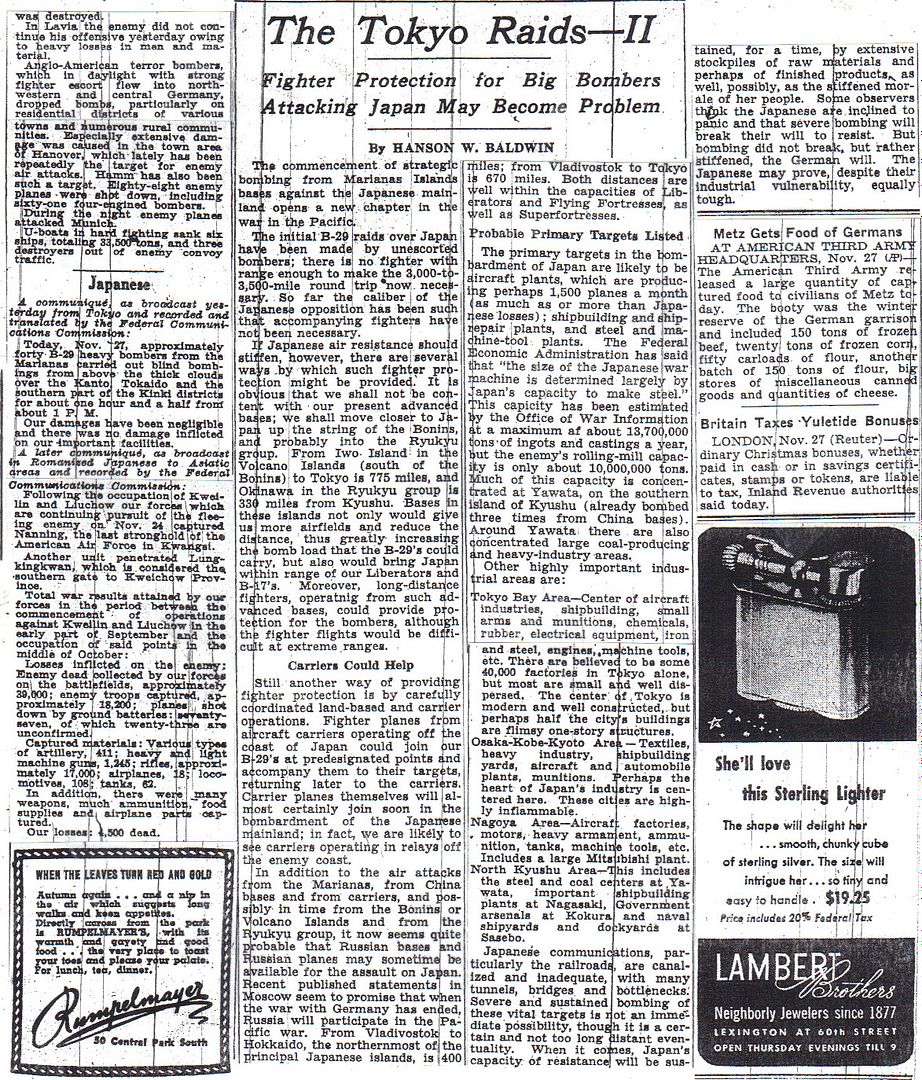
http://www.onwar.com/chrono/1944/nov44/28nov44.htm#
Red Army reaches the Danube
Tuesday, November 28, 1944 www.onwar.com
On the Eastern Front... Soviet forces reach the Danube River to north of the confluence of the Drava River. Mohacs, on the west bank, is captured and the Soviet advance reaches Pecs.
In Liberated Belgium... The first Allied convoy reaches Antwerp which is now operational after extensive repairs and mine clearing. Distribution of supplies to the Allied armies in the field remains a difficulty.
In the Philippines... On Leyte, Japanese night attacks continue. There is heavy fighting at Kilay Ridge in the north and around Buri and Burauen.
http://www.etherit.co.uk/month/10/28.htm
November 28th, 1944 (TUESDAY)
UNITED KINGDOM: London: The secrecy surrounding Britain’s war effort was lifted by the issuing tonight of a government white paper which shows that the output per head of the British population was greater than that of any other nation. The output of war weapons in the last five years included 102,600 warplanes, 25,000 tanks, 722 warships and 4,500,000 tons of new ships. One civilian has been killed for every three servicemen, and one in three British homes have been damaged or destroyed.
WESTERN EUROPE: During the night of 28/29 November, the USAAF Eighth Air Force flies Mission 728: six B-17 Flying Fortresses and six B-24 Liberators drop leaflets over the Netherlands and Germany.
BELGIUM: The first Allied Convoy reaches Antwerp, led by the Canadian-built Fort Cataraqui. Despite German rocket (V weapons) attacks, the opening of this port will alter the supply problems that have plagued the western Allies. Supplies can now be shipped to within 60 miles of the British troops fighting on the Maas. Minesweepers, which have been working for nearly a month to clear the Scheldt river, steamed ahead of the convoy clearing the last few mines. The escort was ready to fight off dive-bombers, but none appeared.
FRANCE: In U.S. Third Army’s XII Corps area, the 328th Infantry Regiment, 26th Infantry Division, mops up west of Canal des Houilleres de Ia Sarre; the 101st Infantry Regiment is sent to Burbach to support the 4th Armored Division east of the Saar River in a drive on Sarre-Union scheduled for 1 December. 26th Infantry Division is to extend northward to take over most of zone held by 35th Div. The 4th Armored Division, in preparation for the Sarre-Union attack, is laboriously clearing the villages east of the Drulingen-Sarre-Union highway, Combat Command B taking Berg.
In the U.S. Seventh Army’s VI Corps area, the French 2d Armored Division starts south from Strasbourg in two columns, reaching the Erstein area, where the Germans are resisting strongly. Combat Command A, 14th Armored Division, also meets firm resistance in the vicinity of Erstein as well as at Barr. Elements of the 36th Infantry Division find Liepvre, on the Ste Marie-Sélestat road, and Koenigsbourg Chateau, southeast of Liepvre, undefended.
In the French First Army area, the II and I Corps converge at Burnhaupt at 1430 hours and pocket the German forces in Alsace. The junction is made by Combat Command 4 of the 5th Armored Division, I Corps, and Combat Command 6, under command of the 2d Moroccan Division of II Corps. The Germans soon attempt to break out of the encirclement. In the Alps Sector, the U.S. 100th Battalion of Regimental Combat Team 442 relieves the Canadian-U.S. 1st Special Service Force on the Franco-Italian frontier.
GERMANY: In the US First Army, VII Corps area:
The 104th Division’s 413th Infantry attacked at 0430 and advanced 2000 yards against heavy resistance. It entered the towns of Imden and Lamersdorf and captured an intact bridge over the Inde River. Frenzerburg Castle has been abandoned by the Germans.
In the 1st Division area there was little forward movement. German tank supported counterattacks launched between 0200 and 0300 were repulsed at Langerwehe and Jungersdorf.
The 4th Division inserted the 12th Infantry Regiment between the 8th and 22d Infantry Regiments in the Hürtgen Forest and the 12th Infantry took Hill 90. Combat Command A, 5th Armored Division and the 121st Infantry, 8th Division seized the village of Hürtgen in heavy fighting.
A battalion of the 13th Infantry cut the Kleinhau-Brandenburg Road on the far edge of the Grosshau-Kleinhau clearing, and stopped a German counter-attack from Kleinhau (Robert Rush) This marks the entry of Patton’s troops in the Saar basin.
In the U.S. Ninth Army area, XIX Corps virtually finishes clearing its zone to the Roer River. Combat Command A, 2d Armored Division, takes Barmen and reaches the river near there. In the 29th Infantry Division zone, Koslar is found free of Germans but the two strongpoints in the Juelich area must still be cleared. The 30th Infantry Division commits a battalion of the 120th Infantry Regiment in the battle for Altkirch, which is cleared, but the Germans retain a small triangle between the Inde and Roer Rivers. The offensive halts temporarily.
In U.S. Third Army’s XX Corps area, the 95th Infantry Division gains positions roughly abreast the 90th Infantry Division to the north; the 377th Infantry Regiment pushes into Germany; the 378th is slowed by opposition from woods east of Falck but makes some progress. In XII Corps area, 3i7th Infantry Regiment of 8oth Infantry Division fights hard for Farebersviller, elements entering and clearing part of the town. About 2000 hours, the Germans with tanks attempt unsuccessfully to drive the Americans from Farebersviller.
The USAAF Ninth Air Force’s 9th Bombardment Division hits the defended villages of Birgel and Merken, a rail bridge at Sinzig, and a Billiger Forest ammunition dump. Fighters fly escort, night intruder missions, and armed reconnaissance in the Kall-Trier area, and support the U.S. 1st, 8th, and 104th Infantry Divisions as they take Langerwehe, Jungersdorf, Hurtgen, and the bridge at Inden.
During the night of 28/29 November, RAF Bomber Command dispatches 316 aircraft, 270 Halifaxes, 32 Lancasters and 14 Mosquitos, to bomb Essen; 308 aircraft bomb the city without loss. Bomber Command documents claim further damage to industrial areas, including the Krupps works. An interesting little item in the local fire brigade report congratulates the team working in the burning headquarters of the local Gestapo for saving valuable documents. In a second raid, 153 Lancasters are sent to bomb Neuss; 148 attack the city without loss. Mosquitos are dispatched to attack several targets: 72 bomb Nurnburg with the loss of one, seven bomb the Hermann Göring steel plant at Hallendorf and one each bomb Duisburg, Hannover and Osnabruck.
POLAND: The last gassings take place at Auschwitz concentration camp in the suburbs of the city of Oswiecim. More than 8,000 have been gassed since 1 November.
BALTIC SEA: U-80 sunk west of Pillau in position 54.25N, 19.50E, in a diving accident. 50 dead (all hands lost).
ITALY: In the U.S. Fifth Army area, the British XIII Corps takes Casola Valscnio and Mt. Taverna without opposition.
In the British Eighth Army’s V Corps area, the Indian 10th Division suspends operations against Casa Bettini bridge because of weather conditions. The Canadian I Corps is concentrating in forward positions in order to attack along the Adriatic coast.
USAAF Twelfth Air Force B-25 Mitchells hit railroad bridges at Magenta, Torre Beretti, and Casale Monferrato, and an abandoned ship in La Spezia harbor. Fighters and fighter-bombers support ground forces in the battle area in the Apennines Mountains south of Bologna, hit communications targets north of the battle zone, and cut railroad lines in 40+ places in the Brenner Pass and north central Po River areas.
During the night of 28/29 November, USAAF Twelfth Air Force A-20 Havocs fly armed reconnaissance over the Po Valley, dropping incendiaries at several points including bridges at Piacenza and Castel Maggiore and the airfields at Ghedi and Villafranca di Verona.
CHINA: The Japanese 11th Army, acting independently and against orders, drives across the Kwangsi-Kweichow border although it has been ordered to halt at the border.
USAAF Fourteenth Air Force B-25 Mitchells attack buildings in the and Chefang area. Over 60 P-40s, P-51 Mustangs, and P-38 Lightnings on armed reconnaissance over wide areas of eastern Burma and southern China hit troops, bridges, horses, and other targets of opportunity at many locations.
BURMA: In the Northern Combat Area Command (NCAC) area, the Chinese 38th Division maintains pressure on the main northern defenses of Bhamo with the 114th Regiment; the 113th Regiment has the mission of entering the city but has been unable to do so.
Thirty nine USAAF Tenth Air Force P-47 Thunderbolts support ground forces in the Pinwe and Bhamo areas. Supply and personnel concentrations and targets of opportunity at Nwegyo, Kutkai, the Meza area, Mankang, Manai, Nawnglok, Nawnglong, Loimawk, Man Myeng, Mong Wi and Kungmong are attacked by about 80 fighter-bombers and 16 hit targets of opportunity along the Maymyo- Bawgyo rail line.
Three USAAF Fourteenth Air Force B-25 Mitchells blast six warehouses at Hsenwi, three bomb Wan Lai- Kam, one hits Kutkai, and four attack buildings in the Wanling area.
FRENCH INDOCHINA: Seventeen USAAF Fourteenth Air Force B-24 Liberators, escorted by 12 P-51 Mustangs, bomb Gia Lam and six B-25 Mitchells hit a railroad bridge at Phu Lang Thuong.
JAPAN: A USAAF Eleventh Air Force B-24 Liberator photographs and bombs the Matsuwa Island shore area in the Kurile Islands.
VOLCANO ISLANDS: Twenty one USAAF Seventh Air Force B-24 Liberators bomb the airfield on Iwo Jima Island. During the night of 28/29 November, a B-24 on a snooper mission hits Iwo Jima.
COMMONWEALTH OF THE PHILIPPINES: The Japanese mount additional attacks at night against US forces on Leyte. Kilay Ridge, in the north, is the scene of the heaviest of these.
In the U.S. Sixth Army’s X Corps area on Leyte, the Japanese try to recover Kilay Ridge, during the night of 28/29 November, moving onto it in strength and isolating Company C, 34th Infantry Regiment, on the southwestern end. The 12th Cavalry Regiment, mopping up in the Mt Badian-Hill 2348 region, about 5 miles (8 kilometers) northeast of Kananga, inches westward from this time until 9 December. In the XXIV Corps area, the 32d Infantry Regiment of the 7th Infantry Division, now greatly weakened, is to be withdrawn to reserve while the 184th and 17th Infantry Regiments continue the battle for Shoestring Ridge.
USAAF Far East Air Forces B-24 Liberators bomb Degos and Matina Aerodromes on Mindanao Island. Small attacks by B-24s, B-25 Mitchells, and fighter-bombers are launched against airfields, shipping, and targets of opportunity over wide areas including the central Philippines.
During the night of 28/29 November, three Japanese Army transports attempt to drop 45 paratroopers on Tacloban Airfield on Leyte where their mission is to disrupt flight operations. One of the aircraft is shot down by antiaircraft fire and the other two crash near Dulag Airfield.
EAST INDIES: Small attacks by USAAF Far East Air Forces B-24 Liberators, B-25 Mitchells, and fighter-bombers are launched against airfields, shipping, and targets of opportunity over wide areas in the Halmahera and Timor Islands area.
CAROLINE ISLANDS: In the Palau Islands, elements of the 81st Infantry Division begin to clear Kayangel Atoll, north of Kossol Passage. In the air, three USAAF Seventh Air Force B-24 Liberators from Angaur Island bomb the radio station on Arakabesan Island.
MARCUS ISLAND: Three USAAF Seventh Air Force B-24 Liberators, flying an armed reconnaissance mission, bomb Marcus Island. The island is located in the North Pacific about 768 nautical miles (1 422 kilometers) west-northwest of Wake Island and is used as a refueling point for Japanese aircraft en route to the Central Pacific.
MARIANAS ISLANDS, SAIPAN: Between six and eight Japanese aircraft attack the USAAF airbases at Isley and Kohler airfields from high altitude causing little damage.
PACIFIC OCEAN: Japanese submarine I-365 is sunk by the USS Scabbardfish (SS-397) off Japan. (Mike Yared)(144 and 145)
Submarine USS Archerfish sighted a large Japanese aircraft carrier screened by four escorts leaving Tokyo Bay. After six and one-half hour surface pursuit of the elusive, high-speed target, she finally obtained a position ahead of her pray, took careful aim, and fired six torpedoes. Moments later, a great glowing ball of fire climbed up the Japanese ship’s side and the Americans soon heard a series of tremendous explosions while the enemy vessel disintegrated. It was not until after the end of the war that the Americans learn that Archerfish had sunk the still unfinished Shinano, a 59,000-ton Japanese aircraft carrier.
In the Camotes Sea, Japanese submarine HIJMS I-46 is sunk about 16 nautical miles (30 kilometers) south of Ormoc, Leyte, Philippine Islands, in position 10.48N, 124.35E, by the USN destroyers USS Saufley (DD-465), Waller (DD-466), Pringle (DD-477), and Renshaw (DD-499).
CANADA:
Frigate HMCS Hallowell commences duty as escort for convoy HX-322.
Corvette HMCS Smiths Falls commissioned.
U.S.A.: Destroyer USS Orleck laid down.
In baseball, Detroit Tiger’s pitcher Hal “Prince Hal” Newhouser is named Most Valuable Player in the American League, gathering four more votes than teammate Dizzy Trout. Newhouser’s 29 wins contrast his 34 combined wins the previous four years. His 2.22 ERA is bettered by Trout (2.12), who also has 27 wins.
The motion picture “Meet Me In St. Louis” premiers in St. Louis, Missouri. This romantic musical directed by Vincente Minnelli stars Judy Garland, Margaret O’Brien, Mary Astor, Marjorie Main, June Lockhart, Hugh Marlowe and Chill Wills. The film is nominated for four Academy Awards. The members of the American Film Institute rank two songs from this film on the list of the 100 Top American Movie Songs of all time; “The Trolley Song” is ranked No. 26 and “Have Yourself A Merry Little Christmas” No. 76.
 UNLOADING BEGINS AT ANTWERP. 28 NOVEMBER 1944, ANTWERP, AS THE PORT BEGAN TO OPERATE AGAIN AFTER THE SCHELDT HAD BEEN CLEARED OF MINES.© IWM (A 26597)
UNLOADING BEGINS AT ANTWERP. 28 NOVEMBER 1944, ANTWERP, AS THE PORT BEGAN TO OPERATE AGAIN AFTER THE SCHELDT HAD BEEN CLEARED OF MINES.© IWM (A 26597)
Another war crime by Churchill? It appears that work on the bombs stored at the RAF base was being done by Italian POWs.
The Geneva Convention (Convention relative to the Treatment of Prisoners of War (1929)
ARTICLE 31.
Labor furnished by prisoners of war shall have no direct relation with war operations. It is especially prohibited to use prisoners for manufacturing and transporting arms or munitions of any kind or for transporting material intended for combatant units.
ARTICLE 32.
It is forbidden to use prisoners of war at unhealthful or dangerous work.
Italy surrendered to the Allies more than a year previous. Any Italians who were still fighting for the Germans, who had invaded Italy after the fall of the Fascists, were doing so under the barrel of a gun. Seriously, if they resisted, they were shot.
Were they really POWs of the Allies by this point, or they simply interned citizens of a now-allied power?
I don’t know the answer, technically, but just thought I would ask.
"Constructed as a subcamp of the Buchenwald concentration camp, Dora-Mittelbau, located near the town of Nordhausen in eastern Germany, became an independent camp in the fall of 1944.
Beginning in 1943, thousands of prisoners were assigned to Dora to expand the tunnels of an old salt mine buried deep in the Harz Mountains.
They built an underground factory that produced the secret V-1 and V-2 rockets.
Human life meant nothing in the Nazis' quest to turn the tide of war and avoid defeat.
"Even by concentration-camp standards, prisoners in Dora were treated brutally by their captors.
They spent their lives with no glimpse of the sun and with no sanitary facilities, laboring until they dropped.
Bodies, covered in lice and often weighing only 80 pounds, were returned to Buchenwald for burning at the rate of about 1,000 a month."
"Once completed, the factory that manufactured the rockets -- the state-owned Mittelwerk GmbH -- used thousands of prisoners as laborers, including many Jews.
They too labored under dismal conditions, drinking their water from leaks in the pipes.
Fear of sabotage provided the pretext for guards to employ extraordinary sadism, hanging prisoners or torturing them on a whim.
Untold thousands died at Dora and on death marches from the camp in the closing days of the war."
By this point, some Italian units were fighting with the British in Italy, units of the Navy and Air Force loyal to the King had also changed sides. On the other hand, the Italian Social Republic had been set up by Mussolini in Northern Italy. So the status of these prisoners was a bit ambiguous.
Certainly the German prisoners would be treated much more poorly after the unconditional surrender by that country, but those facts are a bit different. The British still had a moral duty to protect the prisoners, whatever their status, from hazardous work, which they clearly were not doing.
So, was this a common practice, one that Churchill was aware of?
My Dad, who was just a kid during the war, told me stories about the Italian prisoners of war who were used to work on the Adams Ranch, just a few miles from our family farm in Sac County, Iowa. They were treated very well, at least as well as hired hands. They were even allowed to walk in to town to go to the movies.
A fair number of the German POWs in the US wanted to come back to the US after the war. The French treatment of the POWs was not nearly as good, but nowhere near the brutality dished out by the Reds.
Excerpts from Churchill posted in these threads suggest he was somewhat of a micro-manager. So he probably was aware of usage of POWs in England.
Where are his pearl-handled sidearms?
Disclaimer: Opinions posted on Free Republic are those of the individual posters and do not necessarily represent the opinion of Free Republic or its management. All materials posted herein are protected by copyright law and the exemption for fair use of copyrighted works.